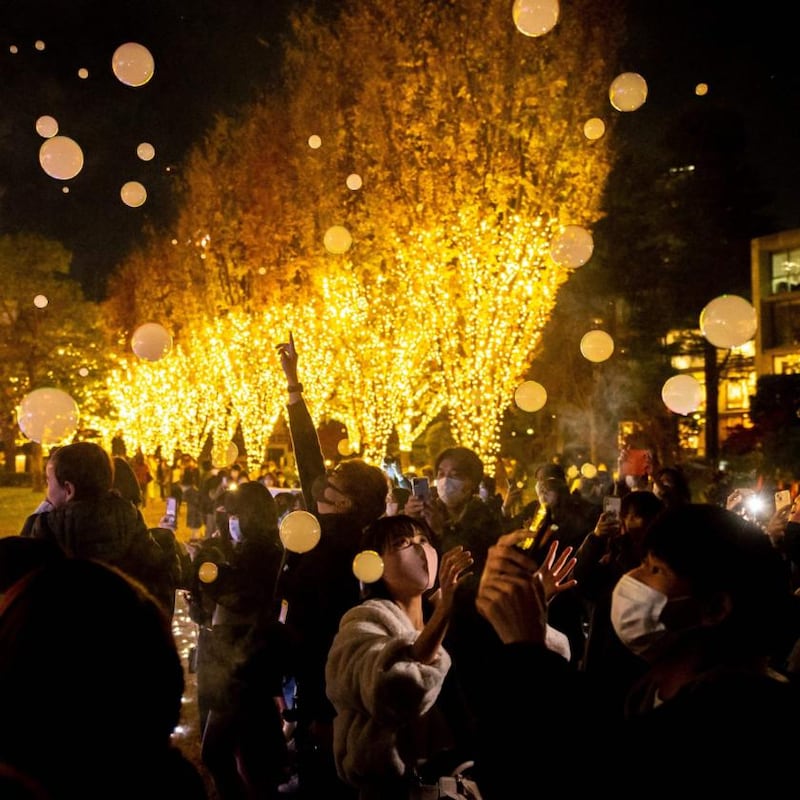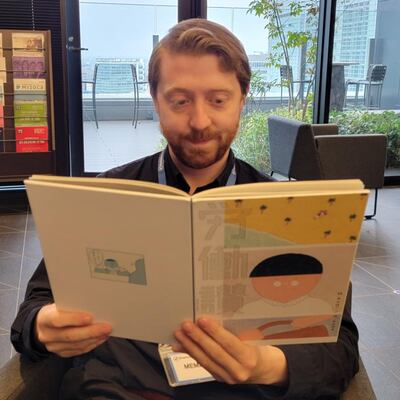Ciaran Lawler arrived in Tokyo in 2018 on a working-holiday visa. Since then he has worked as a policy manager for a traditional Japanese company, lectured at a third-level tourism institution, and been a freelance journalist
Everyone knows that the trains in Tokyo are second to none. Yet it is also an unexpectedly walkable metropolis, especially during the colder months. Winter here is bright. The days are clear and crisp, and the nights are lit by some of the most spectacularly arranged illuminations you are ever likely to see. Convenience stores, famous for their fresh fare of shockingly decent quality, are draped in shiny seasonal decorations. Mariah Carey is phonetically emulated with Asahi-enhanced passion in karaoke rooms the length and breadth of the city.
One of the more head-scratching, albeit finger-licking, Yuletide traditions involves families and work colleagues tucking into buckets of Kentucky Fried Chicken. The fast-food chain's models of Colonel Sanders, eternally smiling and emanating an air of benevolent authority, are decked out in Santa garb throughout the holiday season.

This annual celebration of a fast food has its origins in Japan's economic boom of the 1970s and 1980s, when a desire for commercial consumption collided with the zenith of American cultural influence. An absence of existing Christmas rituals allowed for the adaptation of what has become a rather sincere expression of societal togetherness. As a salaryman, or white-collar office worker, I was a participant in this unique pageantry. December 25th isn't a public holiday in Japan, so I found myself gnawing on poultry with one hand and navigating spreadsheets with the other.
Christmas is also seen as a holiday for couples, like a kind of pre-emptive Valentine’s Day. Social interaction in Japan tends to be a little stilted and choreographed. That statement can be taken either literally or metaphorically and is true in both cases.
Almost everyone in Tokyo wears a mask. A wall of elaborate social protocol separates every individual from every other, but society has generally held together in a concentrated effort to overcome the hardships brought by the pandemic. In Tokyo we have been through multiple states of emergency, which restricted the opening hours of businesses serving alcohol and encouraged the virtually unprecedented practice of working from home.
Things have calmed down at the moment, and there is a sense of cautious optimism heading into 2022. Restaurants and izakayas are packed every evening. The initially slow vaccination rollout has picked up considerably. Other than ubiquitous face coverings and plentiful hand-sanitiser dispensers, the most overt reminder of our strange times is the lack of overseas visitors.

The dearth of foreign tourists is curious to consider. It was notable at first when the seemingly endless stream of Chinese tour buses and overwhelmed westerners dried up abruptly. But their inherently transient nature makes it feel as though they were never here at all. Those working in the hospitality sector feel their absence far more profoundly.
A somewhat misguided attempt to stimulate domestic tourism, awkwardly titled the “Go to Travel” campaign, was introduced during a lull in infections last year. The government generously subsidised travel and accommodation expenses for Japanese residents to explore the country’s 47 prefectures. I admittedly availed of the offer, and took the opportunity to head to Nikko, in Tochigi. It is famous for its lavish temples and stunning natural beauty, exemplified by the majestic Kegon Falls. I didn’t encounter a single other gaijin for the entirety of my trip.
Several friends and acquaintances have returned to their countries of origin over the past year and a half. Their lives and careers in this exceptional place had concluded, but I can see myself here for a little while longer. There are some echoes of Ireland to be found in the innermost crevices of the immeasurable urban jungle, and the Irish community is deeply entrenched and active through the activities of the Ireland Japan Chamber of Commerce.

New Year is a time of hope and renewal. A year-end tradition, considerably less silly than KFC, is for Beethoven’s Ninth Symphony to be performed by choirs small and large across Japan. This custom dates back to the arrival of about 1,000 German captives at Bando prisoner-of-war camp following the Siege of Tsingtao during the first World War. The guests were treated respectfully, and interacted openly with the curious locals. This cultural exchange resulted in the formation of the orchestra that delivered Japan’s first Ode to Joy, in 1918, and whose legacy is appreciated every December 31st. I find this story inspirational.
I'm aiming to visit home early next year. I know I can expect a dramatic contrast on every conceivable level upon returning to a land where efficient public transportation and affordable rents seem like fantastical abstractions. But I'm eager to embrace the informality and lack of urgency that characterise the Irish as a people. The dispensation of convoluted social rituals and its hopeful replacement with a plethora of pints is something I can't resist. Whatever temporal infrastructural defects Ireland might have as a nation, its population can take pride in their extraordinary collective ability to make visitors forget about them.
If you live overseas and would like to share your experience with Irish Times Abroad, email abroad@irishtimes.com with a little information about you and what you do










